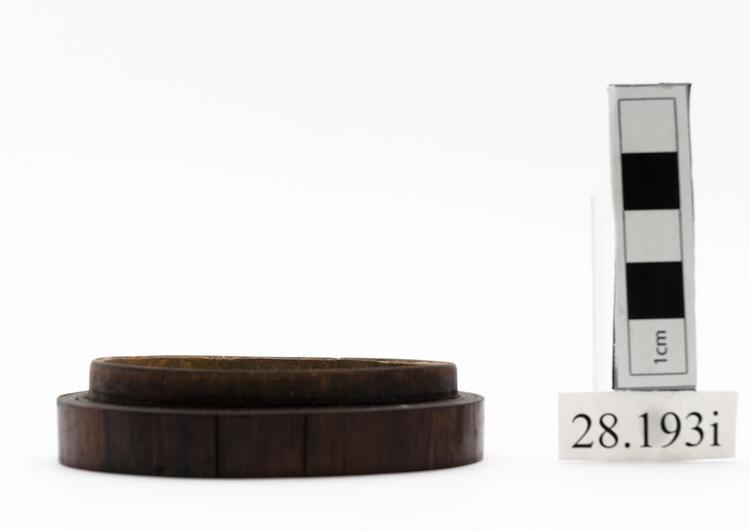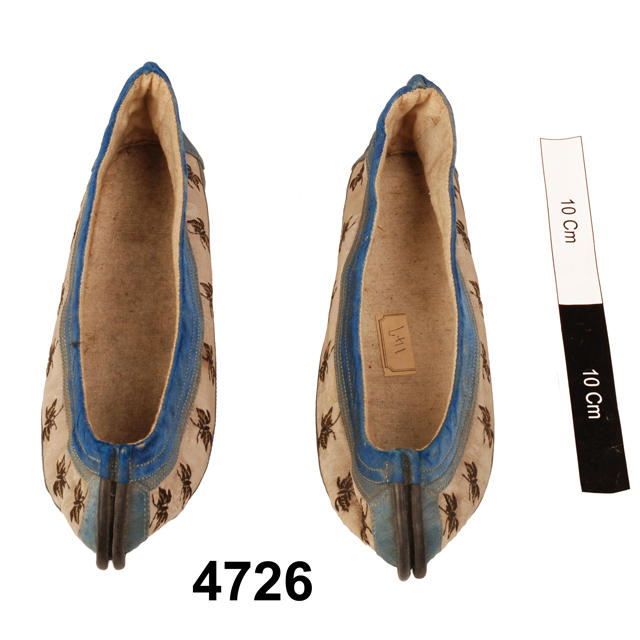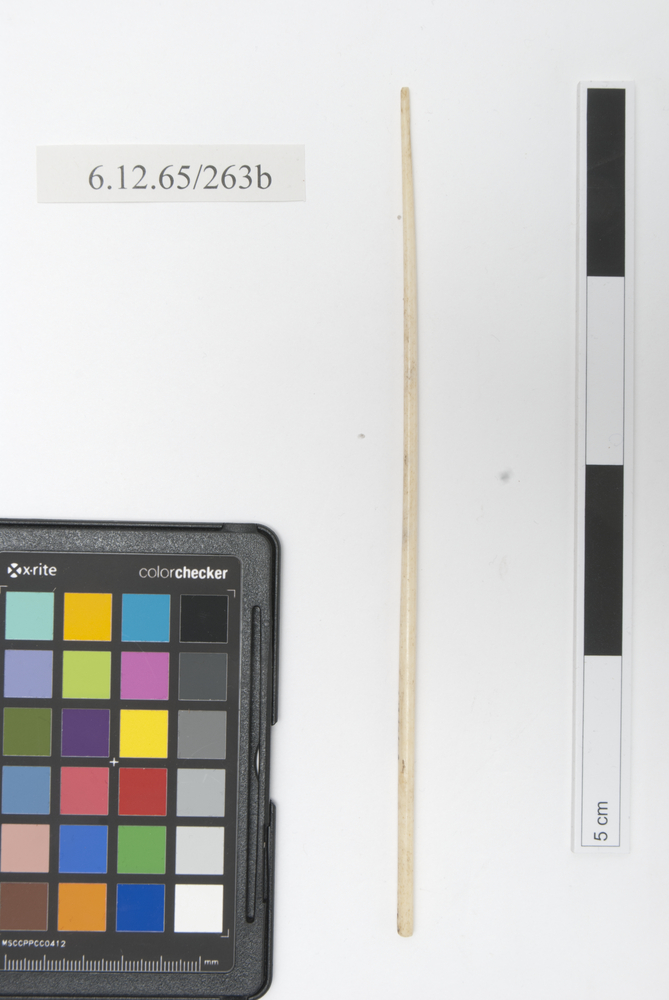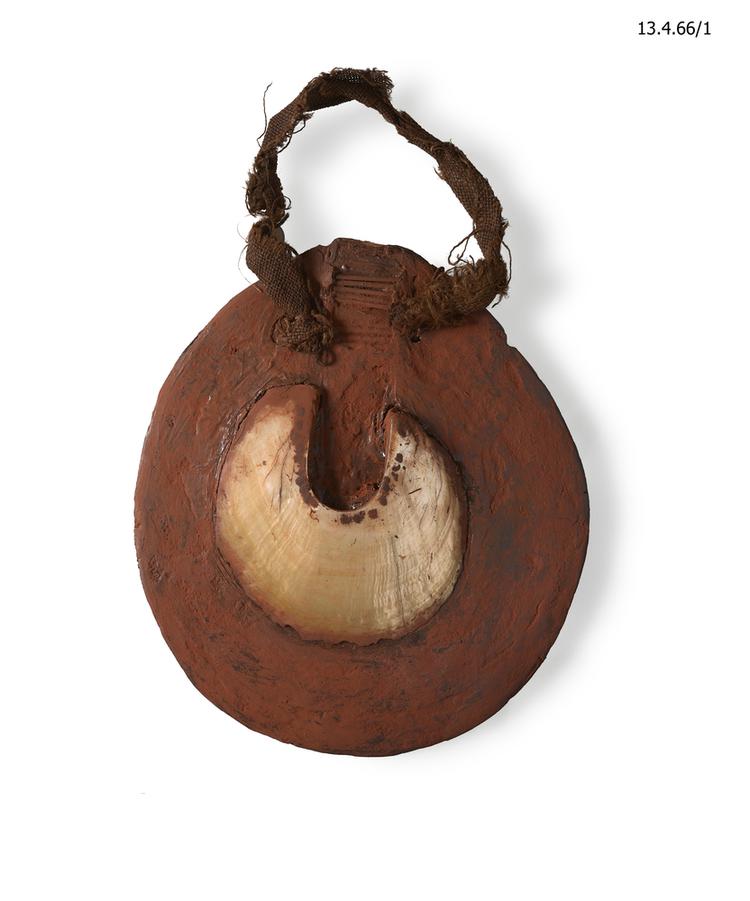
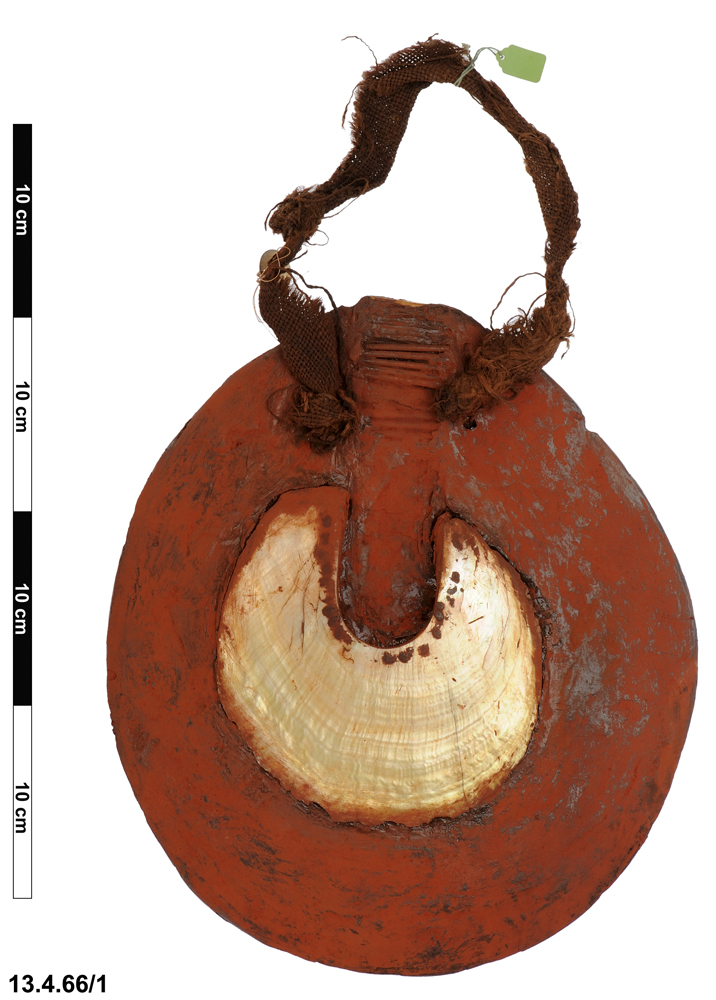
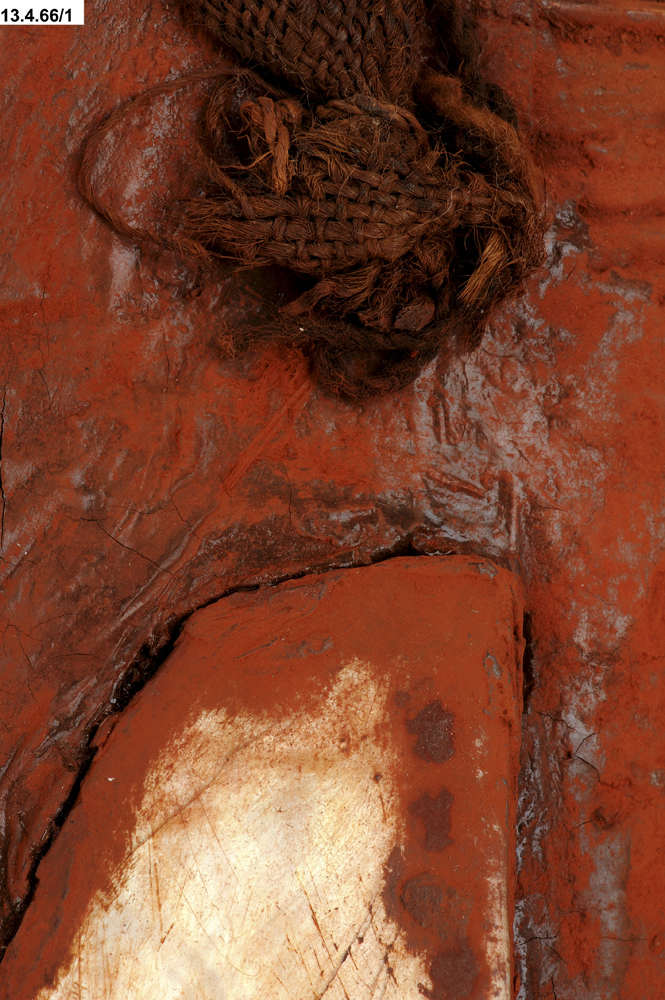
Kin, large lunar piece of pearl shell mounted on flat ovoid block of resin, which is covered with red ochre (smaller shells also used for currency are worn as pendants and this specimen is provided with a loop of sack cloth, however large specimens such as this are generally simply displayed at ceremonies). This specimen is worth about £AI.
Mounted Currency Pearl-Shell, Kin, Mt. Hagen, Western Highlands, Papua New Guinea. Being traded hand-to-hand from the island’s southern coast up into the Western Highlands of Papua New Guinea, the Gold-Lip Pearlshell (Pinctada maxima, a species of oyster) was an exotic rarity. To begin with, these beautiful shells were mostly used as pendants by the Highlanders, but once Australian visitors began to introduce large numbers of the shells into the region, they became a more-or-less standardised unit of currency in the local economy. This said, shells were individually evaluated on the basis of their size, the clarity of their lustre, and the redness of their lip; particularly large and fine kin (as these shells were known) were even given personal names. While shells processed in various ways are found as currency elsewhere in Melanesia, the mounting of kin on a backing of tree resin, and the overlaying of that backing with mounted columns of little bamboo strips (termed omak) is unique to the area around Mt. Hagen. The panel is intended to set the shell off nicely, and to prevent it from touching the ground or getting dirty. The little omak column of bamboo strips is a replica of the similarly-named body ornament worn by Mt. Hagen men, each bar recording a major presentation of eight or more kin shells to an exchange partner. When presented in this way, each kin was freshly repainted with red ochre paint to look its best. This ochre had connotations of wealth and fertility for the Hagen people. Understanding the kin’s role in these exchange presentations is the key to understanding the object’s significance for Hageners. It is with pearlshell kin, alongside pigs and (more recently) paper money, that Mt. Hagen men pay the funeral expenses of their relatives, pay compensation for murders committed by clan members, and pay bridewealth to a woman’s family in order to secure her hand in marriage. Perhaps most significant of all, kin were a vital part of the most significant event in many Hagen men’s lives – the moka. Ambitious ‘Big Men’ compete with each other to put together the biggest moka gift possible for their exchange-partner opponent, one which their partner cannot equal or better. Once the partner acknowledges his inability to return an equal gift of kin or pigs, his subservience (and that of his entire family group) is publically sealed. Men spend years preparing to make a moka presentation, giving out many small gifts of pork, live pigs and kin, on the condition that they will all come back to him when he needs to make moka. Shell, resin, vegetable fibre. Mid 20th Century. Collected in 1965 by Professor Marilyn Strathern and Professor Andrew Strathern.




